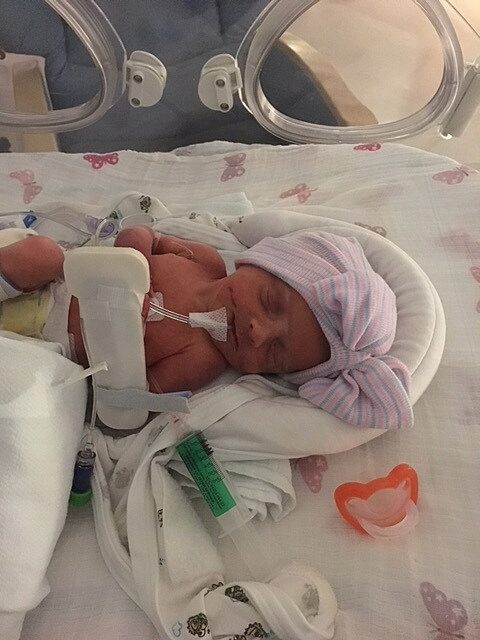Staying Upbeat Through Every Diagnosis
How 9-year-old Kendall Lewis navigates life with VACTERL association. If you ask 9-year-old Kendall “Miss K” Lewis how many surgeries she’s had in her life,…

Update your location to show providers, locations, and services closest to you.
Esophageal atresia is a birth defect in which the esophagus does not develop properly. The esophagus is the tube that normally carries food from the mouth to the stomach.
Esophageal atresia (EA) is a congenital defect. This means it occurs before birth. There are several types of EA. In most cases, the upper esophagus ends and does not connect with the lower esophagus and stomach.
Most infants with EA have another defect called tracheoesophageal fistula (TEF). This is an abnormal connection between the esophagus and the windpipe (trachea).
Often, infants with EA/TEF also have tracheomalacia. When this occurs, the walls of the trachea are weak and floppy, causing high-pitched or noisy breathing.
At least half of babies with EA/TEF have other defects as well, most often heart defects.
Symptoms of EA may include:
Before birth, a mother's ultrasound may show more amniotic fluid than usual. This can be a sign of EA or other blockage of the baby's digestive tract. If EA is present, the baby’s stomach may be hard to see on the ultrasound.
EA is usually found shortly after birth when saliva and fluids collect in the esophagus. This causes the baby to cough, choke, and sometimes turn blue. The health care provider will try to pass a small feeding tube through the infant's mouth or nose into the stomach. If the feeding tube can't pass all the way to the stomach, the infant likely has EA.
An x-ray may also show:
Once EA is confirmed, other tests may include:
EA is an emergency. Surgery is done as soon as possible after birth.
Before the surgery, and for some time afterward, the baby is not fed by mouth. Instead, the baby is fed either:
Care is taken to keep the baby from breathing saliva or other fluids into the lungs.
An early diagnosis gives a better chance of a good outcome.
The infant may breathe saliva or other fluids into the lungs, causing aspiration pneumonia, choking, and possibly death.
Other complications may include:
Prematurity may complicate the condition. As noted above, there may also be defects in other areas of the body.
This disorder is usually diagnosed shortly after birth.
Contact your baby's provider right away if the baby vomits repeatedly after feedings, or if the baby develops breathing difficulties.
Dingeldein M. Selected gastrointestinal anomalies in the neonate. In: Martin RJ, Fanaroff AA, Walsh MC, eds. Fanaroff and Martin's Neonatal-Perinatal Medicine. 11th ed. Philadelphia, PA: Elsevier; 2020:chap 84.
Rothenberg SS. Esophageal atresia and tracheoesophageal fistula malformations. In: Holcomb GW, Murphy JP, St. Peter SD, eds. Holcomb and Ashcraft's Pediatric Surgery. 7th ed. Philadelphia, PA: Elsevier; 2020:chap 27.
Wolf RB. Abdominal imaging. In: Resnik R, Lockwood CJ, Moore TR, Greene MF, Copel JA, Silver RM, eds. Creasy and Resnik's Maternal-Fetal Medicine: Principles and Practice. 8th ed. Philadelphia, PA: Elsevier; 2019:chap 26.




How 9-year-old Kendall Lewis navigates life with VACTERL association. If you ask 9-year-old Kendall “Miss K” Lewis how many surgeries she’s had in her life,…

It was Labor Day weekend 2016. Lauren Seiler and her husband, Andy, were looking forward to spending the weekend with their three-year-old son and Andy’s…
